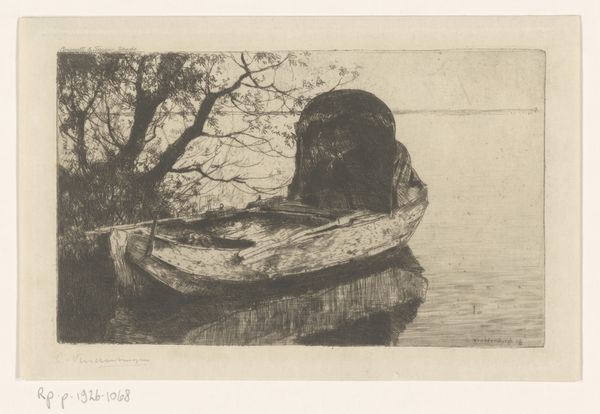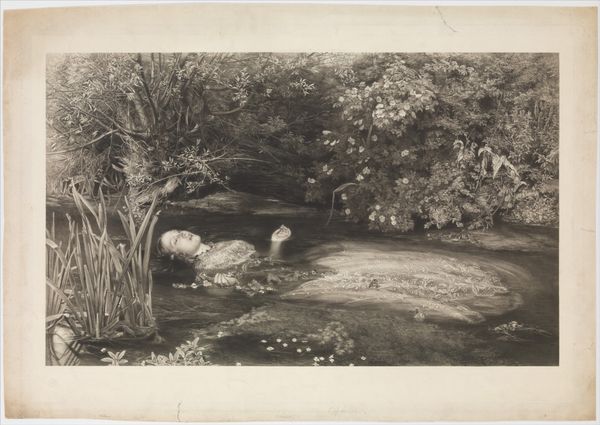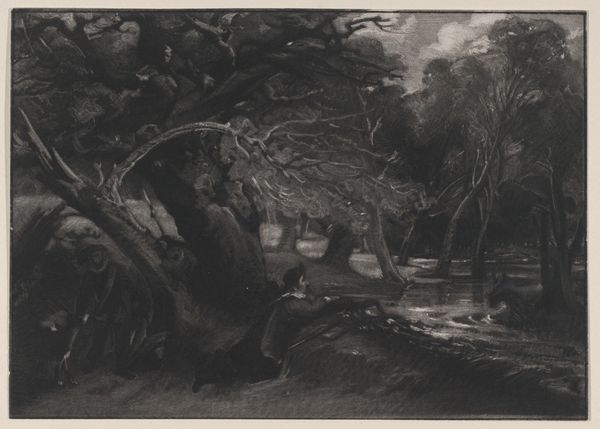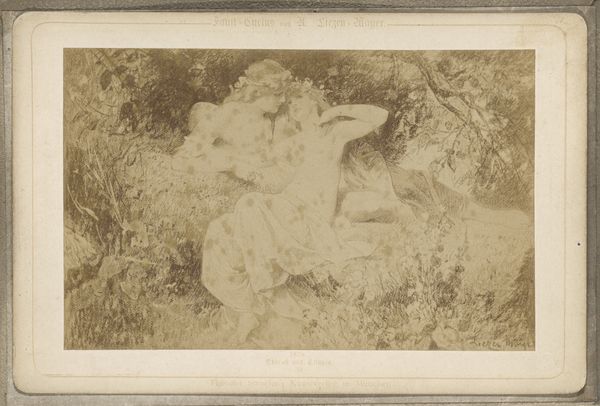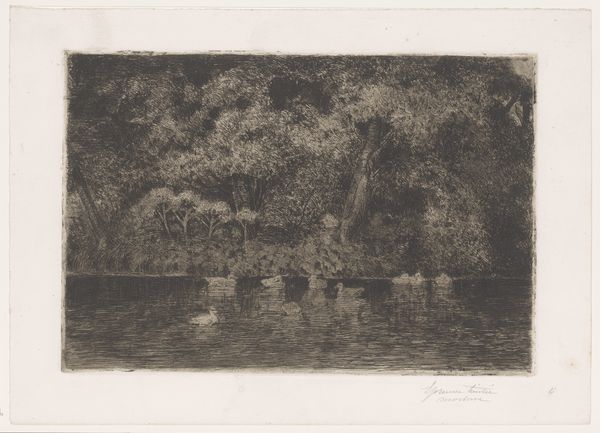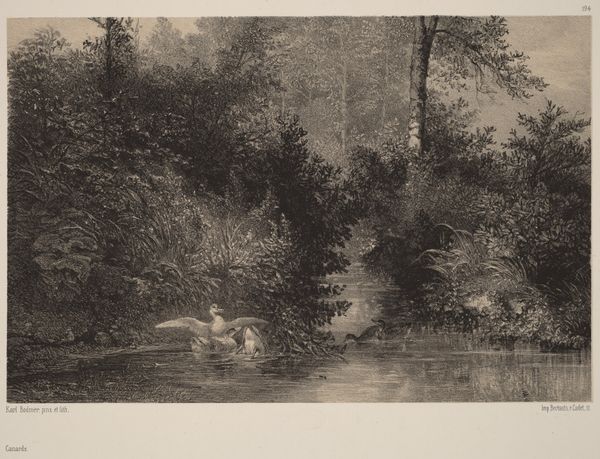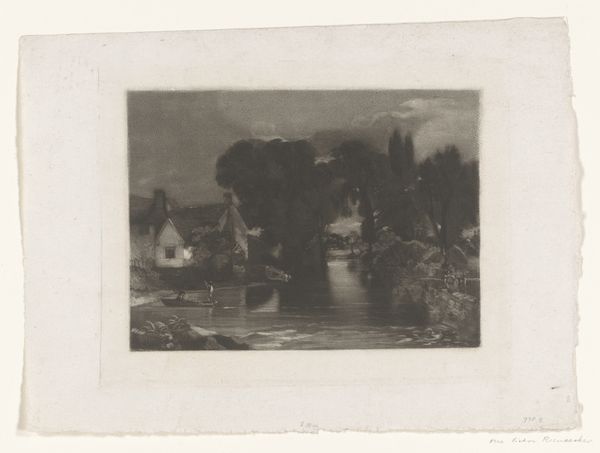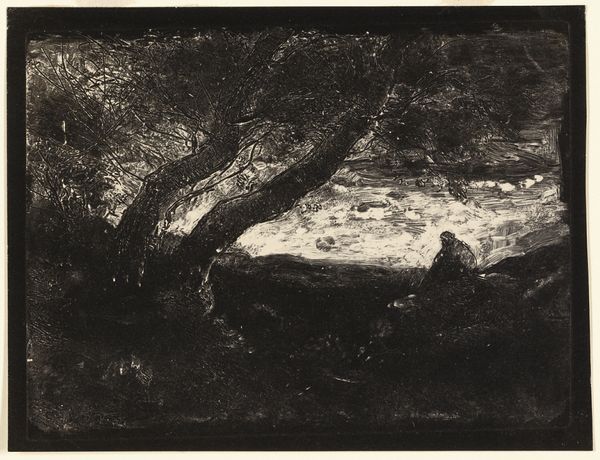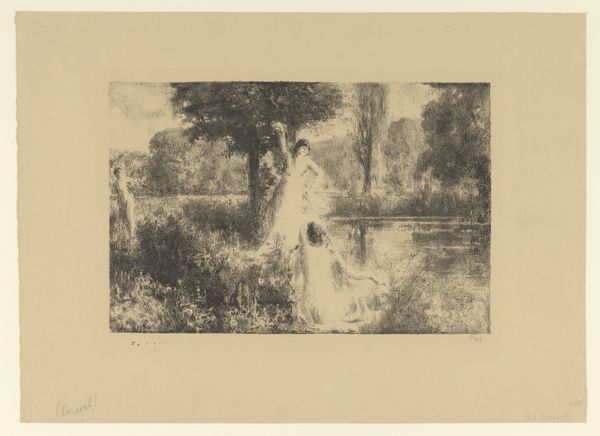
Dimensions: 69.9 × 102.9 cm (27 1/2 × 40 1/2 in.)
Copyright: Public Domain
Editor: This is Frederic Remington’s “Paddling the Wounded British Officer,” a watercolor from 1897, currently at the Art Institute of Chicago. I'm immediately drawn to the reflections in the water, and how they mirror and distort the canoe and its passengers. It's also so dark and moody. What do you see in this piece? Curator: The formal arrangement is compelling. Consider the almost monochromatic palette and how it guides the eye. The darker values in the foreground and background create a visual frame, drawing attention to the central figures in the canoe. How does the composition contribute to the narrative, in your opinion? Editor: Well, the dark colors make me think this is a tense moment, maybe a secret escape, and the balance of light and dark focuses on the injured officer, so he's clearly important. Curator: Precisely. Remington masterfully uses the limited palette to highlight form and texture. Note how the varying brushstrokes articulate the ruggedness of the landscape versus the smoothness of the water. Are the men paddling evenly, and how do you feel the artist’s choice to make it asymmetric shapes your engagement? Editor: I see that the man in the front paddles, while the men at the rear seem passive. So the perspective does highlight tension, in the uneven visual weight distribution, and what this says of labor, dependence, race. I didn’t catch that at first glance. It does look asymmetric as if one is more fatigued or injured. Curator: Exactly. It is a testament to Remington's skill that through formal elements alone, he evokes a scene ripe with implied narrative. Editor: It is fascinating how much can be interpreted through careful analysis of composition and form. Curator: Indeed. There is always a new perspective waiting to be revealed with an artwork that captures these critical approaches.
Comments
No comments
Be the first to comment and join the conversation on the ultimate creative platform.



